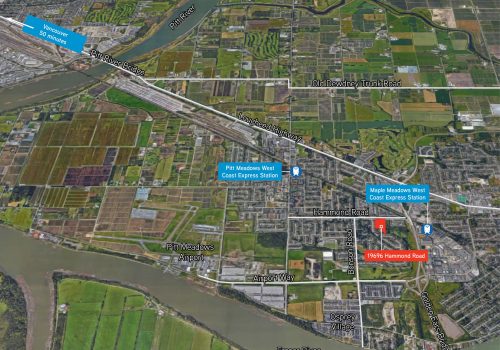Winding up a Strata through the Strata Wind Up process
Prior to the introduction of Bill 40, the process to wind-up a Strata Corporation in BC required a 100% approval rating, something that was very challenging to achieve.
Considering the aging stock of many of BC's strata buildings, extremely high land costs and ever increasing strata fees, winding up a strata corporation to permit development of the underlying land is a logical option for many owners. Colliers has undertaken this process for several properties in the Lower Mainland and has developed a strong expertise in this area. A detailed outline of process follows. For an extensive overview, please visit Colliers' Strata Wind Up Team.
There will come a point in time for many buildings where the actual or inherent costs of both functional and physical depreciation will outweigh the benefits derived from redevelopment. When owners are no longer able or interested in carrying the costs associated with ongoing maintenance, the logical or sensible decision is for demolition and redevelopment. This is a fairly simple and common process for single tenant or single owner commercial properties, but what happens in the case of Strata ownership; particularly residential?
Referred to as ‘winding up a strata’, or ‘Strata Wind Up’, the process of terminating a Strata Corporation in British Columbia has changed considerably with the 2016 introduction of Bill 40.
As more and more strata buildings reach the end of their useful life, and with rapidly rising land values and a diminishing land supply in Metro Vancouver, the termination of a Strata Corporation can often make financial sense to its owners. Until recently however, this process was almost impossible to accomplish.
Winding Up a Strata – Pre 2016
Prior to the introduction of Bill 40, Strata owners were required to pass a unanimous 100% vote in order to effectively wind up a Strata Corporation. If a single owner dissented, the vote would not pass.
Considering the challenge in not only engaging 100% of the ownership, but in achieving a 100% vote, the process to terminate a Strata Corporation often ended in litigation. This costly and time consuming legal process by no means guaranteed a successful outcome, and expenses often escalated as owners scrambled to find a suitable course of action.
Introducing the 80% Vote
On July 28, 2016, Bill 40 was enacted which essentially altered the Strata Property Act and reduced the voting requirement from a 100% vote, to an 80% vote from all Stata owners. Today, if 80% of all registered strata owners vote to wind up the strata corporation, the vote is considered passed.
How It Works
Step 1: Establishing Interest in Winding Up the Strata
As the property nears the end of its life – or sometimes, if a developer approaches a property that may have an alternate Highest and Best Use – the strata corporation begins discussions on potentially terminating the Strata Corporation.
Step 2: Gaining Momentum
The Strata Council holds a meeting to determine whether or not the owners are on board with the idea of liquidating the property. If so, the strata proceeds to Step 3.
Step 3: Taking Action with Legal Representation
If dissolving the strata appears to be a viable option, the next step is for the corporation to pass a resolution to explore liquidation options and to hire legal representation.
Step 4: Taking Action with Real Estate Representation
If the property will be listed for sale, the Strata Council hires a real estate broker and negotiates the listing agreement. The real estate representative begins marketing the property; this exposes the property to a variety of potential investors, who are invited to submit offers on the property. Prospective purchasers will want to undertake thorough due diligence to determine a suitable offer price.
When one or more offers have been submitted, the strata council will enter into negotiations with the offering party or parties, under the guidance of their real estate representative and lawyer. Strata owners must approve the final offer at a general meeting. They then enter into a letter of intent or a contract of purchase with the buyer, subject to termination of the strata.
Step 5: Voting to Terminate
Once the offer has been approved, the strata corporation moves forward by drafting a formal resolution to terminate with the help of its legal counsel – this is the point at which the 80% vote occurs.
Step 6: Liquidating
After the vote passes, this means – among other things – that the strata may apply for termination orders with the Supreme Court. During this stage, the strata plan is canceled with the Land Title Office.
The finer details are determined at this time with the help of an appointed liquidator: finalizing move out dates, handling expenses, sharing the proceeds of the sale, establishing rent-free periods, etc.
Step 7: The Process Completes
Once the liquidation process is finalized, the owners will receive their portion of the property’s purchase price. Often, the sale includes a move-out period, which allows owners a period of time (e.g., two to four months) to find a new place to live and to physically move out of the unit.
The Timeline
It takes time to formally wind down a strata corporation. In a typical transaction, the process lasts anywhere from 12 to 18 months to complete from start to finish – though the exact amount of time varies, depending on the property and the market conditions. Strata corporations must abide by the notice requirements set out in the Strata Property Act for all votes and meetings.
Questions?
Additional information on winding up a strata corporation should be obtained from lawyers’ specializing in strata terminations. If further information is requested, please contact Hart Buck or Jennifer Darling from Colliers' Strata Wind Up Team.
Researched and authored by: Alan L. Johnson of Colliers Unique Properties (604) 661.0842
Colliers Strata Wind Up Team
View Article
